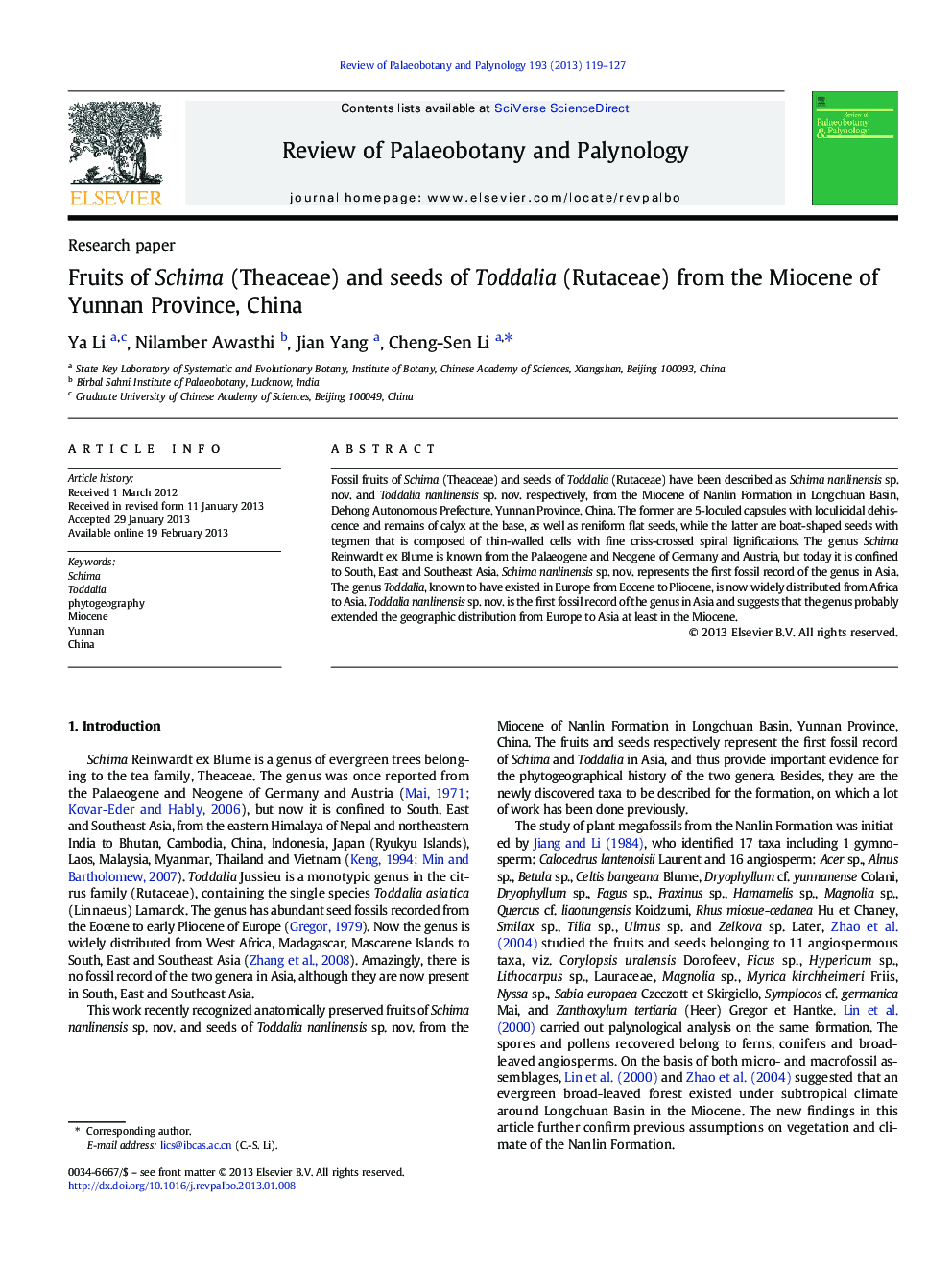| Article ID | Journal | Published Year | Pages | File Type |
|---|---|---|---|---|
| 4750460 | Review of Palaeobotany and Palynology | 2013 | 9 Pages |
Fossil fruits of Schima (Theaceae) and seeds of Toddalia (Rutaceae) have been described as Schima nanlinensis sp. nov. and Toddalia nanlinensis sp. nov. respectively, from the Miocene of Nanlin Formation in Longchuan Basin, Dehong Autonomous Prefecture, Yunnan Province, China. The former are 5-loculed capsules with loculicidal dehiscence and remains of calyx at the base, as well as reniform flat seeds, while the latter are boat-shaped seeds with tegmen that is composed of thin-walled cells with fine criss-crossed spiral lignifications. The genus Schima Reinwardt ex Blume is known from the Palaeogene and Neogene of Germany and Austria, but today it is confined to South, East and Southeast Asia. Schima nanlinensis sp. nov. represents the first fossil record of the genus in Asia. The genus Toddalia, known to have existed in Europe from Eocene to Pliocene, is now widely distributed from Africa to Asia. Toddalia nanlinensis sp. nov. is the first fossil record of the genus in Asia and suggests that the genus probably extended the geographic distribution from Europe to Asia at least in the Miocene.
► Schima fruits and Toddalia seeds are described from the Miocene of Southwest China. ► The fruits of Schima represent the first record of the genus in Asia. ► The seeds of Toddalia also constitute the first fossil record of the genus in Asia. ► Toddalia probably extended distribution from Europe to Asia at least in the Miocene.
